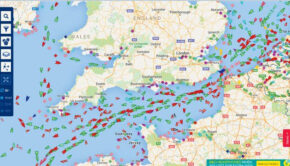Top tips for crisis communications
Published on January 26th, 2021
When things start to go seriously wrong, your communication skills can go out of the window. Pip Hare explains for Yachting World how to communicate clearly in a crisis situation.
When sailing with any number of crew members, good communication is not only key to good seamanship but is the route to a harmonious and happy crew. In times of crisis, however, good communication is often the first thing to slip when we start to panic.
Here are some of my tips for communicating with your crew when it matters the most.
Use names and be direct
Using people’s names when giving orders or when asking questions brings clarity to a situation, avoiding confusion around who is to carry out a task. It can also reassure crew that you are in control of the situation.
Every time I go out with a new crew I learn their names within the first five minutes and always ask if I forget – even if it may cause embarrassment. When asking someone to carry out a task it will be by name and if I want someone to stop doing something I always preface the request with their name.
If two people have the same name we find a way to distinguish between them (but avoid making up nicknames on the spot – in a crisis situation a person is unlikely to respond to a name they’ve only just been given).
In my safety briefing before any voyage I’m clear that in emergency situations I’ll delegate responsibilities by name and only those crew who have been requested to act must do so. This needs to be done in such a way that crew will still be happy to offer their help or suggestions but it clarifies my role as a coordinator and avoids confusion over who should do what.
This briefing should also eliminate feelings of panic from crew who feel they should be doing something but don’t know what to do – if your name isn’t mentioned it’s OK to do nothing. Full report.









 We’ll keep your information safe.
We’ll keep your information safe.